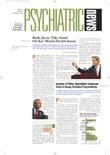Preliminary evidence about the impact of consumer-driven health care plans raises “significant concerns” about their capability “to address high costs, quality-of-care issues, and other fundamental problems of the health care system,” according to health care economist Karen Davis, Ph.D.
Davis, who is president of the Commonwealth Fund, wrote an “Issue Brief” about the subject and a commentary, which appeared in a special issue of Health Services Research in August on consumer-driven health care. The special issue is a compilation of articles from the conference“ Consumer-Driven Health Care: Evidence From the Field,” sponsored by the Robert Wood Johnson Foundation's Changes in Health Care Financing and Organization Initiative and the Commonwealth Fund.
The assumption behind consumer-driven health care plans is that patients do not sufficiently consider financial costs in their decisions about medical care. By transferring some financial risk to them while also providing financial incentives, plan designers hoped that the use of marginal or unnecessary services would be reduced and that patients would be motivated to seek lower-cost providers.
Most interest has centered on combining a high-deductible health insurance plan with a health reimbursement account (HRA) to cover part of the out-of-pocket expenses (for example, $500), wrote Davis. Typically, the unused balance in the HRA for a given year can be carried into the next year.
Other consumer-driven products involve the provision of tiered systems of care, with variable cost sharing for different providers, and of tiered premiums, with varying degrees of benefit comprehensiveness.
The impetus for their development was the concern of employers about the rising cost of health care.
Davis wrote that studies have confirmed that “when consumers face higher cost sharing, they consume fewer services.”
But, she argued, studies also show that cost sharing reduces the likelihood of “receiving effective medical care, particularly for low-income children and adults.”
Cost sharing has reduced the use of both “essential and less essential” prescription drugs, according to studies.
Employers typically offer employees a consumer-driven plan as one option for insurance coverage. Since the plan offers financial incentives for low or no use, it is not surprising that “healthier, higher-income individuals are more likely to enroll [in these plans], leaving sicker and lower-wage employees in higher-cost alternatives.”
Davis noted that 10 percent of individuals account for 69 percent of health care costs.
Consumer-driven health care plans likely cannot resolve major problems associated with rising health care costs in the system as a whole, because they generally are ineffective in curtailing costs for this population, according to Davis.
Davis described five steps toward achieving a high-performance health system that “focus on identifying, demanding, and rewarding performance from providers, with positive incentives for consumers taking a complementary role” (see box on
page 8).
The brief, “Will Consumer-Directed Health Care Improve System Performance?,” and related papers are posted online at<www.cmwf.org/programs/insurance/healthservicesresearch_index.asp>.▪
